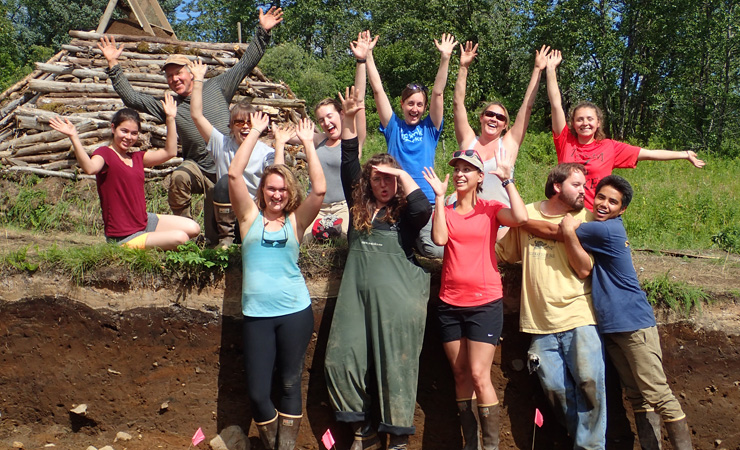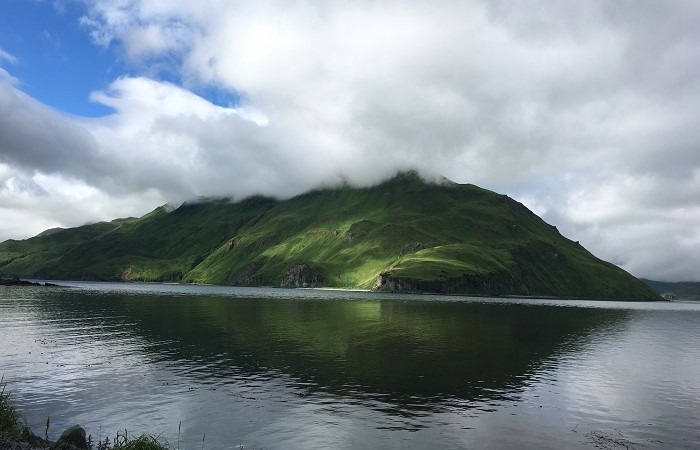Research
Research in the Zooarchaeology Lab focuses on human-animal-environmental interactions. In particular, we address how human subsistence has changed in response to climatic, environmental, and social change. Lab members study both wild and domestic species use among hunter-gatherers and in market economies, and we apply traditional zooarchaeological analytical techniques in combination with behavioral modeling, stable isotope analysis, and quantitative methods.
Research Projects

The Ancestral Alutiiq Foods Project: Partnership in Community Outreach
The BU Zooarchaeology Lab is partnering with the Alutiiq Museum in Kodiak, Alaska to contribute to a list of traditional Alutiiq foods that will be distributed to schools and communities in both English and Alutiiq. Alutiiq ancestors used a wide variety of foods that are now preserved in the archaeological record as bones and seeds, and students in the BU Zooarchaeology Lab sort, identify, and analyze the materials left behind. Quyanaa to the Alutiiq Museum for supporting our partnership!

The Chirikof Island Project: Long-term ecosystem dynamics
What does it mean to establish a “baseline” for landscape restoration? To answer this question, a team of researchers visited threatened Chirikof Island, Alaska in 2013 to collect midden samples for faunal identification, ancient DNA analysis, and stable isotope analysis. Using the fauna in these samples, our team – from BU, the University of Alaska, the Smithsonian Institution and the Alutiiq Museum – is working with the US Fish & Wildlife Service to understand how this landscape has been affected by changing climate, human hunting, and invasive species introductions over the long-term, and what these forces mean for contemporary landscape management. This project is funded by a grant from the National Geographic Society and has been featured by the Aleutian Islands Working Group, the USF&WS, the Kodiak Daily Mirror, and the Alutiiq Museum. Learn More

The Unalaska Sea Ice Project: Climate change and subsistence
Historically, sea ice has never been observed in Alaska’s Aleutian Islands – however, research in the last decade has revealed sea ice-loving seals in zooarchaeological material from Unalaska Island. This project – led by Principal Investigator Catherine West in collaboration with Portland State University and the University of Alabama – seeks to understand whether the presence of these animals represents a dramatic landscape change (i.e. the presence of sea ice) or a behavioral change among the animals. We will address this question using a combination of zooarchaeological analysis, paleoenvironmental reconstruction via stable isotope analysis of animal bone and shell, toolkit analysis, and contemporary oceanographic analysis. This project is funded by a three-year grant from the National Science Foundation, and has been featured by the Aleutian Islands Working Group and the Stable Isotope Working Group of ICAZ. Learn More

Boston University Sclerochronology Project
What can a clam tell us about an Alaskan village? Zooarchaeologists at BU, in collaboration with researchers from the University of Alabama, are examining growth patterns and sampling oxygen isotopes from archaeological butter clams (Saxidomus gigantea) in order to determine the season of harvest. Clams were excavated during the 1980s from middens at Uyak, an 1100-year-old site on Kodiak Island. Researchers at BU seek to determine whether the Uyak site was occupied year-round as a “winter village,” or was used seasonally for resource procurement. Learn More
